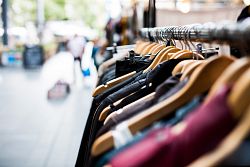

Black Friday officially starts today (Friday 29 November), but sales and advertising have been going on since last week, with retailers hoping to get the most customers spending with low prices.
The event is when shops and retailers put down some of their prices temporarily to encourage shoppers to buy more products. Some retailers even extend the deals across the following weekend and week, with phrases such as Cyber Monday being used.
Black Friday is a tradition from the US that takes place after Thanksgiving, but is now adopted all over the world, and is often used as an opportunity to buy presents ahead of the festive season. It is one of the busiest shopping periods, with US consumers spending roughly $9.8 billion on lucrative deals during the discount-filled weekend in 2022.
However with key links of over-consumption to the environmental crisis, how do days like Black Friday, known for people spending in excess, contribute to the climate emergency?
Environmental impact of Black Friday
A lot of consumer shopping habits has moved online since the COVID-19 pandemic, but the highstreet is becoming popular again with a 20% higher footfall in January 2023 compared to January 2022.
Online shopping can lead to higher emissions than shopping in stores, due to the energy needed to run warehouses and emissions from home delivery. During last year's Black Friday week, it was estimated that 1.2 million tons of CO2 was released due to trucks transporting goods around Europe, which is 94% higher than the average week.
Some studies suggest that Black Friday generates an estimated 429,000 tonnes of greenhouse gases to the environment each year - which is the same as 435 return flights from London to New York!
It is not just the increased number of deliveries that are responsible for the rise in emissions, but the whole cycle, including:
Waste is a big issue around Black Friday, as large discounts and cheap products convince people to buy items they do not need. According to Green Alliance up to 80% of items bought on Black Friday, including the packaging they arrive in, are thrown away after a few uses, some without being used at all.
In the US waste increases by 25% between Black Friday and the New Year. Whilst the majority of this waste comes from packaging, some of it is due to unused items that were bought because of the excitement of getting a good deal.
How to make Black Friday greener?
There are ways to make more conscious, greener choices on Black Friday. For example:
If you are selling or buying something on Black Friday, you can always ask yourself these questions: